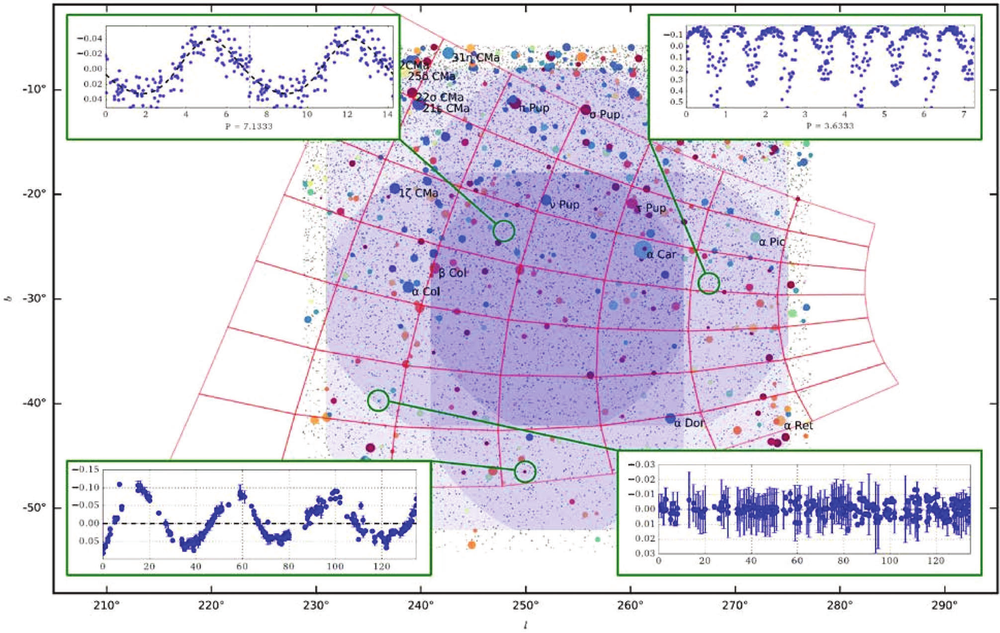PLATO
The PLATO mission of the European Space Agency is dedicated to detection and characterization of transiting exoplanets, manly rocky planets, around sun-like stars. The additional science goal is to study stellar oscillations with a cadence and a baseline never experienced before.
Other than the famous Kepler mission, it will target bright stars that make subsequent follow-up observations easier. What do you need if you want up to a million bright stars in your field-of-view? Exactely, a huge field-of-view. This is achieved by using rather small refracting telescopes, at an aperture of only 12cm (f/2.06). The required accuracy is achieved by using multiple telescopes on one satellite: In total, 26 telescopes will comprise the satellite, 2 of them dedicated to fast-read mode for stellar oscillation. The rest build up the total field-of-view: Each telescope has a FoV of slightly more than 1000 deg2, in total ~2250 deg2 with varying number of telescopes overlapping will be reached. With this large FoV, more than 20000 solar-like (i.e., of spectral type lateer than F5) dwarf and subdwarf stars at magnitudes V<11m will be continuously monitored in a single field. Current estimates project a yield of more than 700 small, Earth-sized planets in this sample, with at least half a dozen, but up to 200 of them in the habitable zone (the number vastly depends on the definition and thus the extent of the habitable zone). All of these host stars will be bright enough for radial-velocity follow-up to allow mass determination of the planets. Together with radius determination from the transit signal and together with age estimates, PLATO might be the oftern cited Rosetta-stone for (exo)planetary sciences.
Within the huge consortium of partners, AIP focusses on providing the input catalog (work package 131330) for the PLATO-South long-duration field. The BMK10k at Cerro Aramzones is to monitor all stars down to V~17m at an precision of 50mmag. The plate scale of the BMK10k is more than 5 times better than the PLATO plate scale, thus identification of background contamination leading to false-positives will be possible with the BMK10k catalog.

The PLATO southern deep field (SPF) visible as the blue-shaded areas and overplotted the grid of the 49 pointings of the BMK10k required to cover the entire PLATO field. The inserts are mock-ups of expected light curves as delivered by BMK10k.
Involved AIP sections and groups:
Telescope Control and Robotics, Stellar Physics and Exoplanets, Stellar Activity, Technical Section